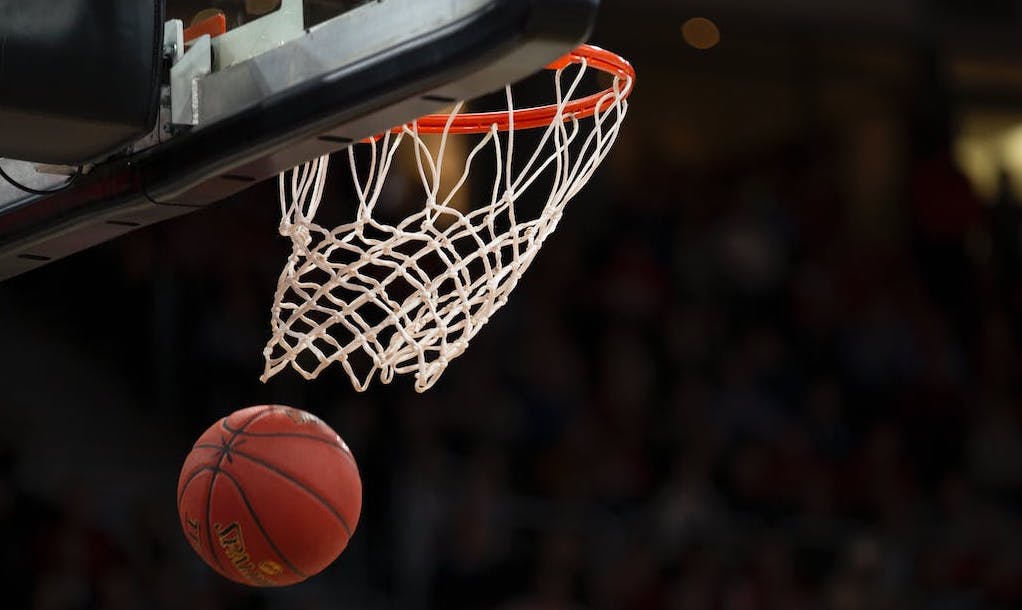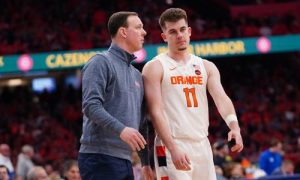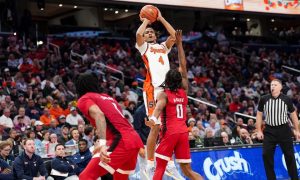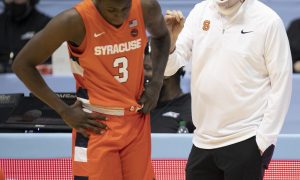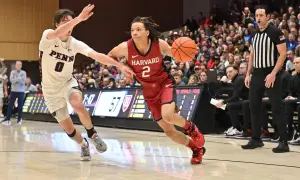The iconic 3-pointer has undeniably redefined the game of basketball, transforming strategies and captivating audiences worldwide. From the exceptional range of Steph Curry to the precision of Sabrina Ionescu, from the audacity of Damian Lillard’s shots to the sharpshooting of Caitlin Clark, the influence of the 3-point shot permeates all basketball levels.
Perhaps the most memorable moment in recent NBA history is the dramatic 3-pointer by then-Cleveland guard Kyrie Irving, sealing a victory against Golden State in the pivotal Game 7 of the 2016 Finals.
Over the years, the ascendancy of the 3-point shot has been staggering. To illustrate, in LeBron James’ inaugural NBA season 21 years ago, teams averaged 14.9 attempts from beyond the arc per game. Fast forward to this season, and that number has more than doubled, with teams launching an average of 35.0 three-point attempts per game.
Amidst this long-range dominance backdrop, two Syracuse University professors are challenging the status quo, endeavouring to revolutionize how teams strategize and execute 3-pointers.
Rethinking Strategy: The Data-Driven Approach of Sanders and Ehrlich
Sanders and Ehrlich’s groundbreaking analysis, stretching from the 2016-2017 season to the 2022-2023 campaign, reveals compelling insights into the basketball world.
By meticulously dissecting shot chart data, they discovered that the expected value of a 2-point shot in the 2022-23 season stands at approximately 1.096 points per attempt, slightly edging out the 3-point attempt’s expected value of 1.083 points.
However, when incorporating free throw attempts to account for fouls on missed shots—an aspect traditionally overlooked in field goal percentage calculations—the true value of a 2-point shot ascends to 1.181 points, while the 3-pointer’s value adjusts to 1.094.
This nuanced understanding of shot values, born from the professors’ collaborative effort to enhance shot chart precision, could dictate future basketball strategies, particularly in high-stakes situations akin to the Elite Eight Bets of the NCAA tournament, where strategic nuances can tilt the scales of victory.
Implications and Recognition: The MIT Sloan Sports Analytics Conference
The study conducted by Sanders and Ehrlich has earned a spot as a finalist in the 2024 research paper competition at the prestigious MIT Sloan Sports Analytics Conference, scheduled to take place on Friday and Saturday in Boston. The meeting is known for being a key part of bringing sports and analytics together. Daryl Morey, president of the basketball business for the Philadelphia 76ers, and Jessica Gelman, CEO of the KA Group, are the co-founders and co-chairs. The conference is renowned for its crucial role in the intersection of sports and analytics.
Research papers presented at this conference are renowned for their potential to shape the future of sports strategy and operations. Alongside their presentation, Sanders and Ehrlich have taken the initiative to share their findings with analytics staffers at NBA teams. The feedback from the league has been overwhelmingly positive, resonating deeply with San Antonio Spurs coach Gregg Popovich’s long-standing critique of the 3-point shot’s dominance in modern offenses.
Sanders and Ehrlich’s research doesn’t advocate for a dramatic shift back to the era of minimal 3-point attempts but rather proposes a more strategic approach to 3-point shooting. The core of their suggestion revolves around optimizing offensive efficiency by being selective with 3-point attempts and focusing on the shooter’s proficiency, challenging the prevailing trend of volume over efficiency in using the 3-point shot.
Conclusion
In dissecting the evolution of basketball strategies through the lens of Sanders and Ehrlich’s research, a notable trend emerges that underscores their findings. Over two decades, there has been a significant uptick in 2-point field goal percentages alongside a more modest increase in 3-point field goal percentages.
Specifically, during the 2003-04 NBA season, teams converted 46% of their attempts from 2-point range on an average of 64.9 attempts per game, compared to shooting 34.7% from beyond the arc on 14.9 attempts per game. Fast forward to the 2023-24 season, and the landscape has shifted dramatically. Teams now shoot a higher 54.6% on fewer 2-point attempts, averaging 54.3 per game, while 3-point accuracy has improved to 36.7% on 35 attempts per game.
This data supports the strategy that Sanders and Ehrlich proposed for a more selective and efficiency-driven approach towards 3-point shooting and highlights the continued effectiveness and increased efficiency of 2-point shots in the modern game.


